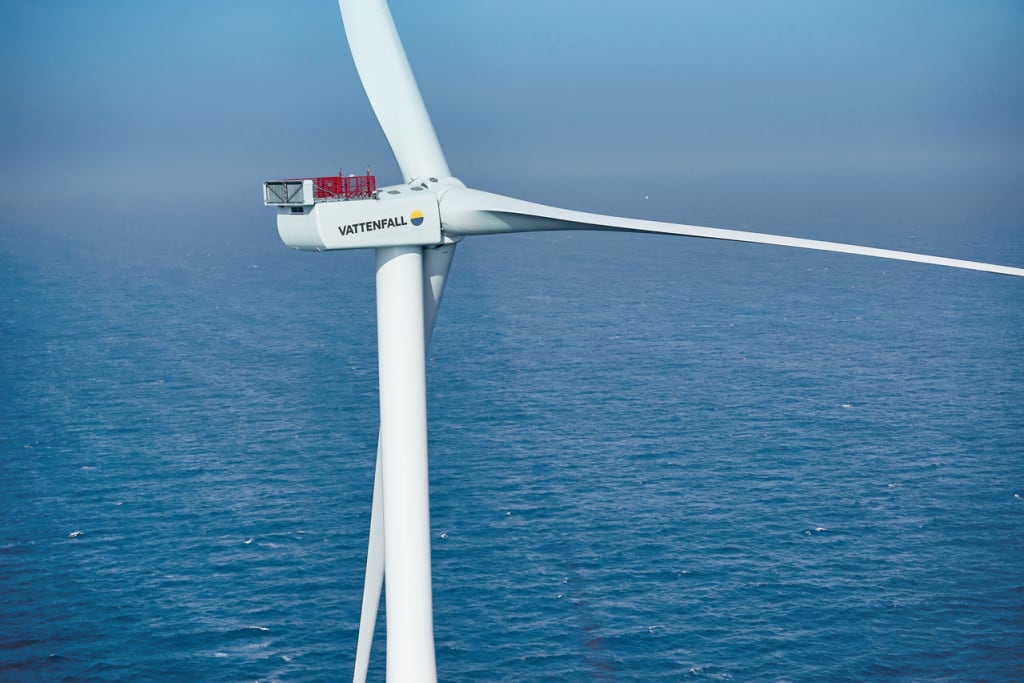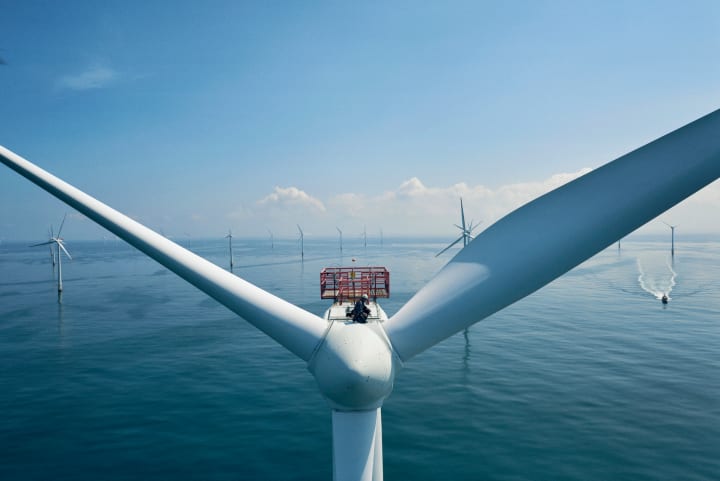Navigating Turbulent Waters: UK Offshore Wind's Cost Challenge
Offshore Wind

Offshore wind energy has emerged as a promising solution in the UK's pursuit of sustainable and renewable energy sources. The country has been at the forefront of developing ambitious projects, intending to harness the power of its vast coastline to generate clean electricity. However, recently, one of the world's biggest offshore wind developments faced a major setback as rising costs prompted the halting of a crucial project. In this article, we will delve into the factors affecting the viability of UK offshore wind projects and explore the challenges faced in maintaining profitability amidst soaring costs.
The Growth of Offshore Wind in the UK
The United Kingdom has made remarkable progress in the expansion of its offshore wind capacity over the past decade. With favorable coastal conditions and a strong political commitment to renewable energy, the UK boasts a vast portfolio of offshore wind farms scattered across its shores. These projects have significantly contributed to reducing the nation's carbon emissions, boosting green energy generation, and providing employment opportunities.
The Halted Project and the Cost Challenge
In the face of growing prices, Sweden's Vattenfall called into question the economics of UK offshore wind, halting plans for a project that was to be part of one of the world's largest developments.
Vattenfall stated that it will halt construction of the 1.4GW Norfolk Boreas project "in its current form" and will not make an investment decision at this time. Vattenfall also stated that it will "examine the best way forward" for the rest of its Norfolk zone, which includes the 4.2GW Norfolk Vanguard project.
The decision to halt a significant offshore wind project that was expected to be part of one of the world's largest developments highlights the challenges faced in the industry. The primary concern revolves around the increasing costs of constructing and operating these offshore wind farms. As projects grow in size and complexity, their profitability comes under scrutiny.
The costs of offshore wind projects are influenced by several factors. Firstly, the expense of manufacturing and installing wind turbines at sea is substantial. Additionally, the infrastructure required to transport the electricity generated to the mainland also adds to the overall costs. Furthermore, ongoing operational and maintenance expenses, coupled with unpredictable weather conditions, contribute to the financial burden.

Government Support and Policy Impact
The profitability and viability of UK offshore wind projects are also closely linked to government support and policy decisions. The UK government has played a pivotal role in fostering the growth of renewable energy through various mechanisms, such as contracts for difference (CfDs) and subsidies. These initiatives have provided financial certainty for investors and developers, enabling the sector to flourish.
However, in the face of economic challenges or shifting political priorities, government support for renewable energy can fluctuate. Reductions in subsidies or delays in the allocation of CfDs can significantly impact the feasibility of offshore wind projects, potentially leading to delays or cancellations.
Technology Advancements and Cost Reductions
Despite the current cost challenges, there is optimism that technology advancements will play a crucial role in driving down expenses in the long run. The offshore wind industry has made substantial progress in improving turbine efficiency, reducing maintenance costs, and developing innovative installation methods. As these technologies mature and become more widely adopted, the overall cost of offshore wind projects is expected to decrease, enhancing their profitability.
Collaboration and Supply Chain Efficiencies
Collaboration among stakeholders, including governments, developers, and suppliers, can also contribute to cost reductions. By streamlining supply chains and standardizing processes, offshore wind projects can become more financially viable. Moreover, fostering a competitive market for suppliers can lead to improved cost-effectiveness and quality in the procurement of equipment and services.
Balancing Sustainability and Profitability
While profitability is undoubtedly crucial for investors and developers, it is essential not to lose sight of the long-term sustainability objectives. Offshore wind projects not only contribute to reducing carbon emissions and combating climate change but also create jobs, stimulate local economies, and enhance energy security.
Conclusion
The viability of UK offshore wind projects, and projects in the rest of the world, faces significant challenges due to rising costs. The recent halting of a major project that was meant to be part of one of the world's biggest developments underscores the importance of carefully assessing the financial feasibility of these ventures. While cost challenges are indeed formidable, advancements in technology, efficient supply chain management, and consistent government support can pave the way for a more sustainable and profitable offshore wind industry in the UK. Striking a balance between sustainability and profitability will be crucial as the nation continues its journey towards a greener and more renewable energy future.
About ER-Marine
ER-MARINE, we offer comprehensive due diligence services for the development of floating offshore wind projects in South Korea. We have extensive local knowledge of the Korean market and can help you identify and mitigate potential risks before they become huge and costly problems. At ER-Marine we tell you what you need to know, not always what you want to hear.
About the Creator
Erik Roelans
I am founder and CEO of ER-MARINE and write about the green energy transition, renewable energy challenges, climate change, offshore wind permitting, policy dialogue, marine biodiversity, renewables and floating offshore wind development.






Comments
There are no comments for this story
Be the first to respond and start the conversation.